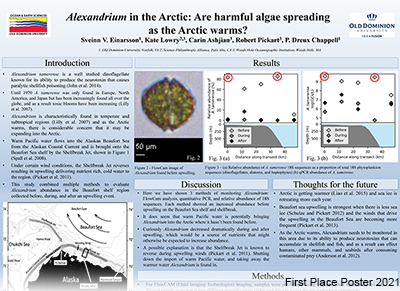ORCID
0000-0002-9523-3346 (Jayawardena), 0000-0002-4879-7309 (Jayarathna), 0000-0003-0173-4463 (Wu)
College
College of Sciences
Department
Computer Science
Program
Computer Science (Ph.D.)
Publication Date
4-2021
DOI
10.25883/zhmy-pt22
Abstract
Scientific literature is crucial for researchers to inspire novel research ideas and find solutions to various problems. This study presents a reading task for novice researchers using eye-tracking measures. The study focused on the scan paths, fixation, and pupil dilation frequency of the participants. In this study, 3 participants were asked to read a pre-selected research paper while wearing an eye-tracking device (PupilLabs Core 200Hz). We specified sections of the research paper as areas of interest (title, abstract, motivation, methodology, conclusion)to analyze the eye-movements. Then we extracted eye-movements data from the recordings and processed them using an eye-movement processing pipeline. To analyze how the eye-movements change throughout the reading task, we calculated fixation counts, fixation duration, and index of pupillary activity (IPA) for each participant. IPA is calculated using the pupil diameter and low IPA reflects low cognitive load, whereas high IPA reflects strong cognitive load. When analyzing scan paths, we observed that all participants started reading from the title section of the paper. Following this, no two participants followed the same scan path when reading the paper. Also, the average fixation counts and duration suggested that participants preferred to fixate more on the methodology section and spent more time reading it compared to the other sections. Moreover, the IPA of participants was higher when reading the title section, indicating higher cognitive demand prior to exploring the research idea presented in the paper. The least IPA was observed in the methodology section, indicating a lower cognitive load. The purpose of this study was to analyze the scan paths of novice researchers while reading a research paper. We observed different scan paths among participants, and a higher fixation count and duration when reading the methodology section, with a comparatively low cognitive load.
Keywords
Eye-tracking, Index of Pupillary Activity, Reading tasks
Disciplines
Applied Behavior Analysis | Computer Sciences
Files
Download Full Text (1.4 MB)
Recommended Citation
Jayawardena, Gavindya; Jayarathna, Sampath; and Wu, Jian, "Analysis of Reading Patterns of Scientific Literature Using Eye-Tracking Measures" (2021). College of Sciences Posters. 2.
https://digitalcommons.odu.edu/gradposters2021_sciences/2


